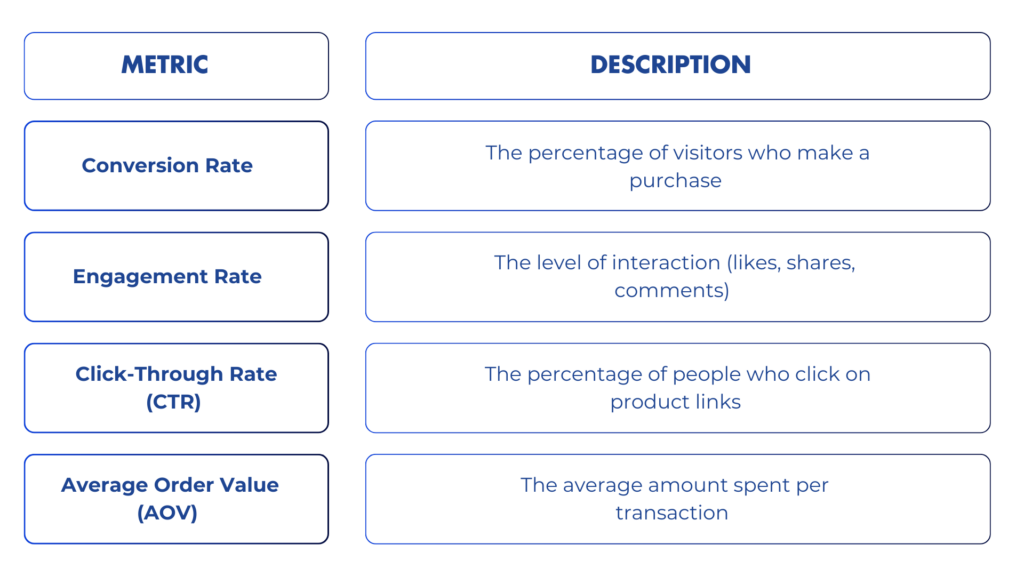Imagine scrolling through your favorite social media platform, and in the middle of catching up with your friends’ posts, you come across a brand offering a product you’ve been eyeing for a while. With just a few clicks, you’re not only browsing through the product but also making a purchase—all without ever leaving the app. This seamless shopping experience is a prime example of social commerce, where social media platforms become a powerful sales channel.
Social commerce is revolutionizing how businesses engage with customers, bridging the gap between brand interaction and direct sales. In this blog, we’ll dive into the strategies that can help businesses leverage social commerce to drive sales effectively.
1. Understanding Social Commerce and Its Impact
Social commerce refers to the use of social media platforms to promote and sell products directly to consumers, bypassing traditional e-commerce methods. Unlike standard e-commerce, where businesses direct customers to external websites to complete a purchase, social commerce allows users to complete their purchases within the social media platform itself. With the rise of platforms like Instagram, Facebook, and TikTok, social commerce has transformed the way businesses reach and engage with customers, providing them with new opportunities to make sales.
For example, Instagram’s “Shoppable Posts” feature allows users to view product details and make purchases without leaving the app. This direct integration of e-commerce into social platforms has made it easier for consumers to shop and discover products organically while interacting with content. Moreover, businesses are tapping into the power of influencer partnerships, social proof, and user-generated content to promote their products in a way that feels authentic and engaging.
Social commerce is more than just a trend; it’s a significant shift in consumer behavior. Studies show that consumers are increasingly turning to social media to discover and research products. In fact, according to research, nearly 55% of consumers discover new products on social media platforms, which makes social commerce a crucial strategy for businesses looking to thrive in the digital age.
2. Building a Social Commerce Strategy
Developing a solid social commerce strategy begins with understanding your audience and selecting the right platforms. Each social media platform attracts a different demographic, so it’s essential to choose the one that best aligns with your target market. For example, Instagram and Pinterest are highly visual platforms, making them ideal for businesses in fashion, beauty, and lifestyle sectors. On the other hand, TikTok’s younger, trend-conscious audience can be leveraged for products aimed at Gen Z.
Once you’ve chosen the appropriate platforms, it’s time to integrate shopping features that enable seamless transactions. Facebook and Instagram allow businesses to set up a shop within the platform, showcasing products with prices and descriptions. These features enable users to explore your offerings without leaving the platform, encouraging impulse buys.
Next, creating engaging content is crucial. To make the most of social commerce, businesses should focus on creating content that feels organic, relevant, and engaging. User-generated content (UGC), where customers share their experiences with your products, can be a powerful tool for social proof. Additionally, collaborating with influencers who align with your brand values can increase visibility and credibility, driving more sales.
Incorporating features like live shopping, where businesses can host live events showcasing products in real time, is another way to drive engagement and increase sales. The key is to offer an experience that’s interactive, personal, and engaging, which encourages potential buyers to take the next step and make a purchase.
3. Optimizing the Customer Experience for Social Commerce
Optimizing the customer experience is essential for success in social commerce. A smooth and frictionless purchase process can be the difference between converting a potential customer and losing a sale. One of the first steps in optimizing your customer experience is ensuring that your social media pages are fully optimized for shopping.
For instance, platforms like Instagram and Facebook offer businesses the ability to set up a shop within their profiles. Make sure that your shop is easy to navigate, and that the product descriptions and images are high-quality and informative. The better your products are showcased, the more likely customers will feel confident enough to complete the purchase.
Another key factor is customer support. With the instant communication enabled by social media, it’s important to provide timely responses to inquiries and issues. Chatbots, live chat, and even direct messages can be utilized to engage with customers quickly and effectively. Additionally, businesses should ensure that their checkout process is quick and secure to prevent customers from abandoning their carts at the last step.
Lastly, offering promotions or discounts through social media can be a great way to incentivize purchases. Whether through limited-time offers, exclusive social media discounts, or giveaways, these promotions can help drive sales and encourage followers to make a purchase they might have been considering for a while.
4. Tracking and Analyzing Social Commerce Performance
Tracking and analyzing the performance of your social commerce efforts is crucial for understanding what’s working and what needs improvement. Using analytics tools offered by social media platforms, such as Facebook Insights, Instagram Analytics, and TikTok Analytics, businesses can monitor engagement rates, click-through rates, and conversions
It’s essential to monitor key metrics such as sales conversion rates, engagement levels, and customer acquisition costs to ensure your social commerce strategy is delivering the desired results. A table outlining common social commerce metrics might look like this:

By regularly analyzing these metrics, you can make data-driven decisions to refine your strategy, improve customer engagement, and ultimately drive more sales.
Conclusion
In conclusion, social commerce is no longer just a trend; it’s a critical strategy for businesses aiming to stay competitive in the digital landscape. By understanding the intricacies of social commerce and optimizing your approach, you can unlock new opportunities to engage with customers, drive sales, and grow your business.
If you’re looking to build a robust social commerce strategy, it’s essential to partner with a reliable marketing agency that understands the latest trends and tactics. AKOI, one of the best marketing companies in India, offers tailored solutions to help you leverage media marketing and drive success in the world of social commerce. Get in touch today to take your business to the next level!


